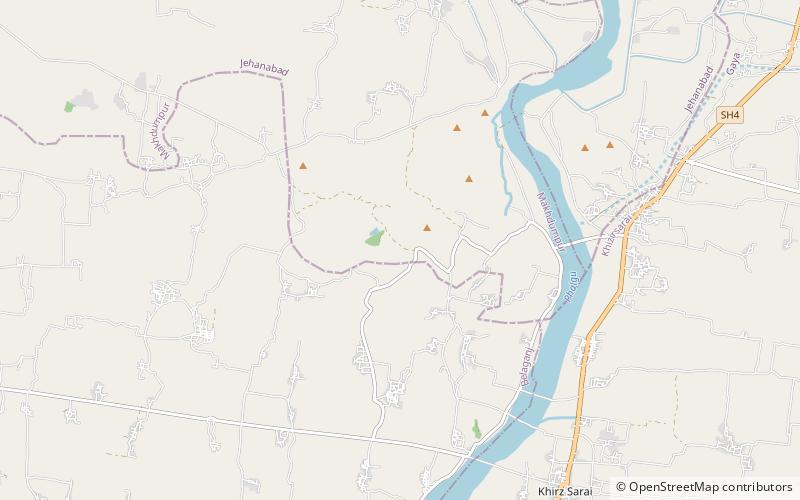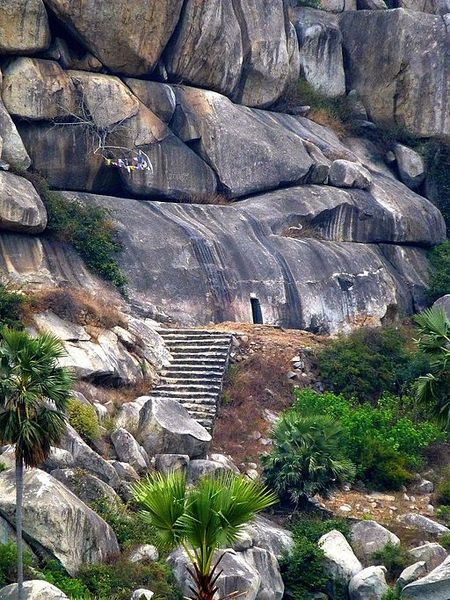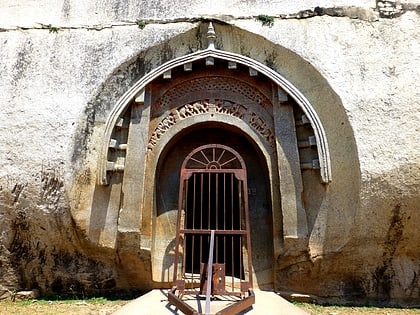Barabar Caves


Facts and practical information
Nestled in the rugged hills of the Indian state of Bihar, the Barabar Caves are an exquisite testament to India's ancient rock-cut architecture. These caves, believed to be the oldest surviving rock-cut caves in the country, date back to the Mauryan period, around the 3rd century BCE. They were commissioned by Emperor Ashoka and his grandson, Dasaratha, and are renowned for their remarkable polish and Mauryan engineering.
The Barabar Caves complex consists of four primary caves, each carved out of a massive granite hill. These are the Lomas Rishi Cave, Sudama Cave, Karan Chaupar, and Visva Zopri. The first two are the most significant, with the Lomas Rishi Cave being the most celebrated for its ornate gateway, designed to mirror contemporary wooden architecture, and an interior chamber that is a marvel of ancient acoustic engineering.
The caves served as sanctuaries for ascetics from the Ajivika sect, an ancient Indian religion contemporaneous with early Buddhism and Jainism. The interiors of the caves are smooth to an extraordinary degree, their walls finished to a mirror-like gloss that has withstood the ravages of time. Each cave features a highly polished inner sanctum, with Sudama Cave bearing an inscription that attributes its construction to Ashoka himself.
Visitors to the Barabar Caves can explore the austere yet imposing chambers and marvel at the precision with which they were carved using rudimentary tools. The echoes within the caves' halls, a result of their polished surfaces and precise acoustics, add to the mystical aura of the site. These caves not only provide a glimpse into the religious fervor of the time but also showcase the advanced level of craftsmanship achieved by artisans of the Mauryan Empire.
Barabar Caves – popular in the area (distance from the attraction)
Nearby attractions include: Lomas Rishi Cave.

